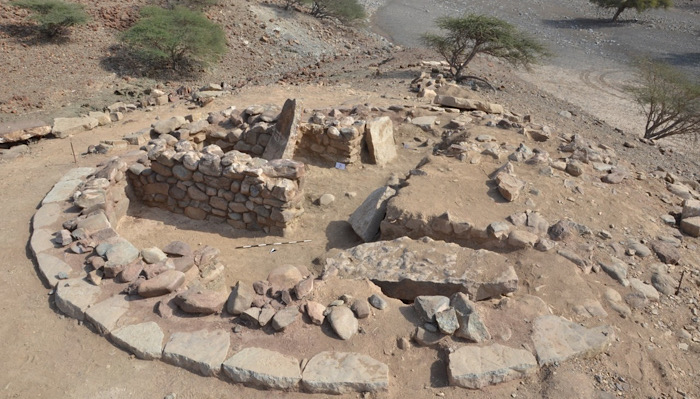
Muscat: The Ministry of Heritage and Tourism announced a new archaeological discovery dating back to the third millennium BC in the Wilayat of Saham in the North Al Batinah Governorate.
The Ministry of Heritage and Tourism announced the discovery of an archaeological discovery from the Early Bronze Age in the Dahwa area in the Wilayat of Saham in the North Al Batinah Governorate in the Sultanate of Oman.
The joint Omani-American archaeological excavation team, which is supervised by the Ministry of Heritage and Tourism headed by Professor Dr Nasser Al-Jahwari , Dr Khaled Douglas from the Department of Archeology at Sultan Qaboos University, and Professor Kimberly Williams from Temple University in Philadelphia, USA, has uncovered a distinctive set of archaeological tools from the third millennium BC.
Professor Nasser Al Jahwari, the discoverer of the site in 2013, said: "The Dahwa archaeological site is among the important early Bronze Age sites in the North Al Batinah Governorate due to the nature and quantity of archaeological finds that were uncovered during the various seasons of survey and excavation that began in 2013 and continued until 2021."
Al Jahwari added that in 2013, the department began its field work by conducting a comprehensive archaeological survey in the Dahwa region, and five distinct archaeological sites were discovered that include ancient settlements dating back to the so-called Umm al-Nar culture (2600-2000 BC).
"These sites represent the oldest permanent settlements in the north of the Sultanate of Oman, and as a result of the importance of this discovery, the Archeology Department continued the field research to identify the nature of the settlement and the exact history of it, by conducting six seasons of archaeological excavations, all of which focused on the sites of Dahwa 1 and Dahwa 7, " Al Jahwari said.
Professor Nasser Al Jahwari stressed that the aim of the excavation was to identify the nature of settlement and its chronology, the general planning of the buildings, their types and function, the economic and social activities, and the environmental conditions surrounding the site, and resulted in the publication of a number of research papers in international refereed and prestigious journals, in addition to presenting the results in a number of international conferences.
"The archaeological work of the Department of Antiquities at Dahwa 7 included the excavation of stone buildings with different functions, including warehouses, industrial buildings for processing copper ore, administrative buildings, and ritual buildings, the first of their kind in prehistoric times in Oman, in addition to a mass grave of a thousand 3 BC, and it is the only tomb found in Dahwa 7 settlement, " Professor Nasser Al Jahwari added.
"The department, in cooperation with Professor Kimberly Williams, excavated this tomb and it turned out that the burial in this tomb was collective, and it consists of six burial rooms, in addition to finding the remains of skeletons, a large number of local and imported pottery, smooth stone utensils, and some jewelry."
Professor Kimberly Williams notes that among the most important distinctive tools in this tomb are the remains of silver jewelry, such as beads that are part of a necklace and a number of rings.
"It is interesting that one of the silver rings found bears a seal engraved with the famous Indian bison cow, which is a distinctive decorative pattern and shape known in the culture of the Indus Valley (the Harappa), which indicates the activity of trade between regions and ancient civilisations. We find these shapes repeated in circular stone seals in the areas associated with trade with the Indus Valley at that time in Iran, Bahrain, Mesopotamia, and in Oman as well, " Kimberly Williams added.
Professor Jonathan Mark Kenoer, an expert in ancient technologies from the University of Wisconsin-Madison, said: “Although seal rings are a model for later time periods, this discovery proves that the Bronze Age peoples were more intelligent and technologically advanced than previously thought, as they indicate at an early stage, they introduced management solutions that allowed them to grow economically in the following millennia."